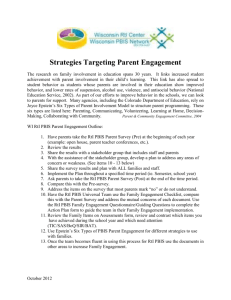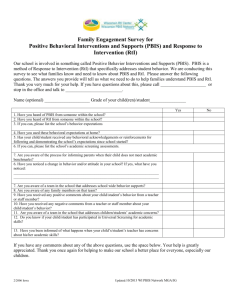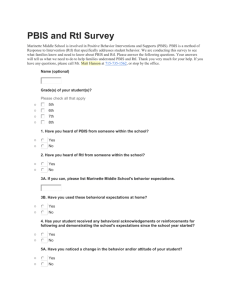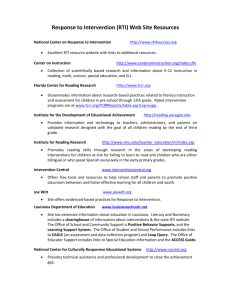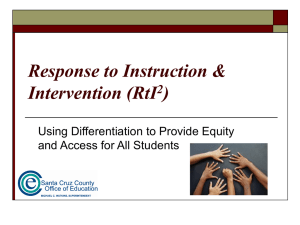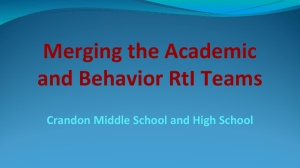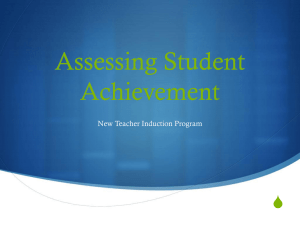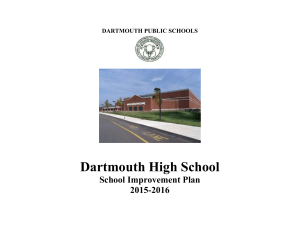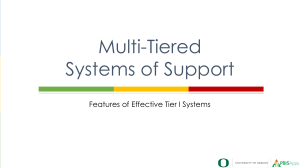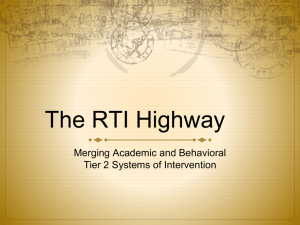Killing 2 birds with one triangle - OrRTI
advertisement
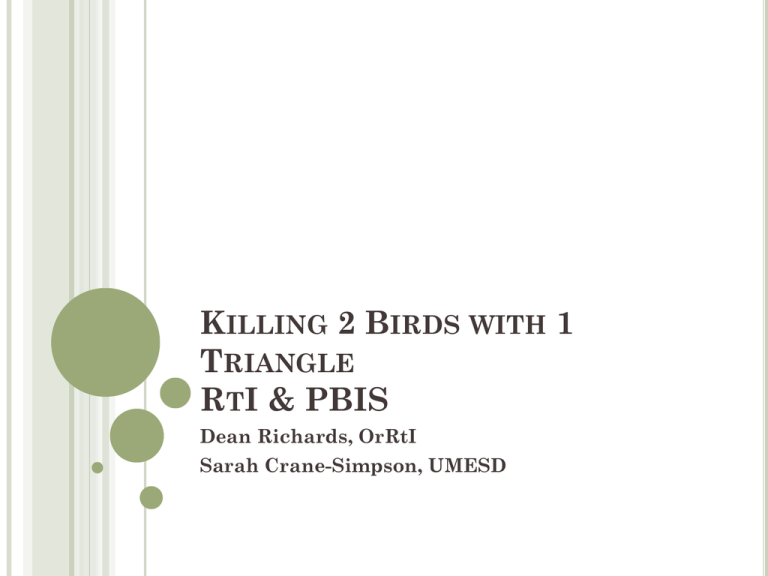
KILLING 2 BIRDS WITH 1 TRIANGLE RTI & PBIS Dean Richards, OrRtI Sarah Crane-Simpson, UMESD WHICH CAME FIRST? TOO MANY ACRONYMS . . . RtI = Response to Intervention PBIS = Positive Behavior Intervention and Support DESIGNING SCHOOL-WIDE SYSTEMS SUCCESS Academic Systems Behavioral Systems Intensive, Individual Interventions •Individual Students •Assessment-based •High Intensity 1-5% 5-10% Targeted Group Interventions •Some students (at-risk) •High efficiency •Rapid response Universal Interventions •All students •Preventive, proactive FOR STUDENT 80-90% Intensive, Individual Interventions •Individual Students •Assessment-based •Intense, durable procedures 1-5% 5-10% 80-90% Targeted Group Interventions •Some students (at-risk) •High efficiency •Rapid response Universal Interventions •All settings, all students •Preventive, proactive RTI Principal Classroom Teachers Specialists School Counselor School Psychologist PBIS o ODRs o Sped Referrals o Nominations Types of meetings Tier 1 (grade level) Examine the overall health of the core program for ALL students Tier 2 (intervention group level) Examine students in interventions to determine, “Is what we are doing working?” Exit, intensify, or continue intervention Tier 3 (student level) Problem solve around individual student need and design individual plan PBIS/RTI Teacher leaders Job delegation Top down and bottom up RtI Ongoing Based on student and staff need and performance. Time to collaborate and plan Fidelity checks Data used to drive professional development needs. PBIS o 101 o Tier 2 interventions o Team updates RtI ALL students at least three times per year Good screening measures: PBIS Efficient, brief, valid, reliable, unbiased and over-identifies Screening is used as a key measure to determine: The health of the core Which students might need additional intervention. o Office Discipline Referrals o Screener o Teacher nomination RtI PBIS Phonemic Awareness Phonics Fluency Vocabulary Comprehension o o State standards Scope and sequence Engaging and motivating instructional strategies School-wide expectations Lesson Plans RtI Provide the “now what” after teams have analyzed student data Guide decisions for all tiers Take the guesswork out of “what to do next” Ensure equity across schools PBIS o Team meetings o Number of ODRs o Referrals RtI PBIS Data answers the question: “Is what we are doing working?” Frequency: Every 2 weeks (minimum) Every week (ideal) o Data, not feelings RtI PBIS Designed to match instructional need o CICO o TKO o Social skills groups Is in addition to district core curriculum Uses more explicit instruction Provides more intensity Additional modeling and guided feedback Immediacy of feedback Does NOT replace core o Community involvement BENEFITS OF A RTI SYSTEM RTI will help you to: Know immediately, “Is what we are doing working?” Know which students need more/different Know what each student needs Provide structures to deliver what students need Reduce rates of identification of student learning disabilities Prevent reading problems before they occur Raise student achievement
